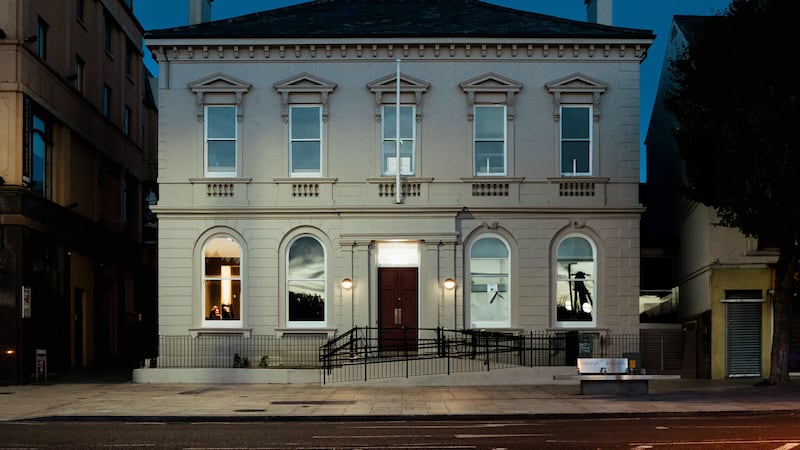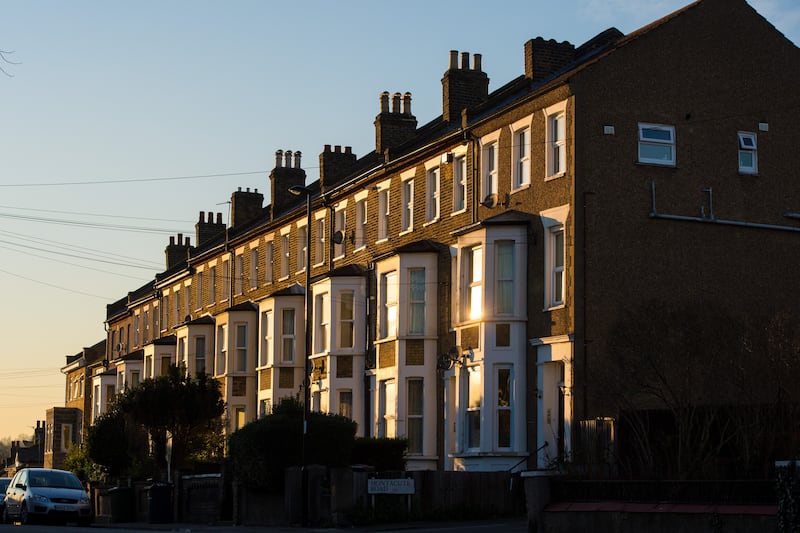By Vicky Shaw,
Press Association
What lengths would you go to in order to get on the property ladder?
Many young people with dreams of getting on the property ladder may be wondering if their aspiration will one day turn into reality, amid tales of rising house prices and strong competition for homes.
Across the UK housing market, demand for homes from buyers picked up in September, for the first time in seven months, according to the Royal Institution of Chartered Surveyors (Rics).
With buyer demand back on the increase, new, separate research has spelled out just how desperate some would-be home owners are to get a foothold.
A third of would-be home buyers aged 34 and under would be willing to buy a home in a high-crime area, according to a survey.
Some 34% of 18 to 34-year-olds would be willing to do this, compared with just 7% of over-55s.
And despite widespread news coverage of the damage caused by flooding in recent years, 44% of 18 to 24-year-olds and 36% of 25 to 34-year-olds would consider living in a flood-risk area if it helped them onto the property ladder, the research from Aviva found.
Many would also roll up their sleeves and take on a run-down “doer-upper” property in need of significant changes to make it safe if it meant they owned their own home.
Seven in 10 (70%) of 25 to 34-year-olds would be willing to do this.
And 83% of 18 to 24-year-olds would be willing to leave family and friends behind and relocate solely to be able to afford cheaper housing.
Indeed, the price of a home and how affordable it is was cited by three-quarters of 18 to 34-year-olds as a main influence over their property buying decisions.
Lindsey Rix, managing director, personal lines, at Aviva UK General Insurance, says: “Home ownership is still seen by many in the UK as a significant milestone in life, and these findings make it clear that many young people are being forced to be flexible about where they buy in order to get a leg up on the housing ladder.
“Fewer younger buyers would rule out living in areas with a higher risk of crime or flooding, and there is a real willingness to make the necessary investments in a property in order to bring it up to scratch.”
She says younger buyers in particular could also be at risk if they do not have adequate home insurance in place.
Aviva’s survey findings suggested younger home owners were less likely than all age groups generally to have adequate buildings and contents insurance in place.
Rix says: “Younger buyers in particular are at higher risk as many do not have adequate insurance in place.
“Even properties in the safest of areas can fall victim to damage or crime, and it’s vital that home owners across the country have sufficient protection in place to counter this.”
Meanwhile, a separate report from Post Office Money Mortgages underlines why some would-be buyers may be willing to take drastic measures to get on the property ladder, if it gives them the chance of home ownership.
That report found four in 10 (40%) renters from across the UK expect to be renting for the rest of their lives.
The struggle to raise a deposit was the main reason renters said they did not own their own home.
John Willcock, head of mortgages at Post Office Money, says: “High house prices and concerns about the cost of living have left many assuming that owning their own property is a distant dream rather than an achievable goal.”
But of course not everyone wants to be a home owner - and one in 16 (6%) renters said they liked the freedom of being able to move when they wanted to.
HOW MUCH... WOULD A BURGLARY COST YOU?
No one wants to think about someone breaking into their home, but new research suggests that it would cost the average household £2,833 if this were to happen.
The research, from Post Office Home Insurance, found unlucky residents could be met with a £566 bill for damage in addition to the £2,267 lost in stolen valuables.
The most common costs as a result of damage caused during a burglary include forced doors, broken locks and broken windows.
The research was based on figures from the Office for National Statistics (ONS).
POUNDNOTES
Financial fact: Financial fraud losses increased by 25% in the first six months of 2016 - with scams and online attacks helping to drive the figures up, according to Financial Fraud Action UK (FFA UK).
Fraud losses across payment cards, remote banking which covers online and telephone banking and cheques amounted to £399.5 million in total in the first half of the year, marking a 25% increase on the same period in 2015.
RATES CUT FOR CHILD SAVERS
More than 100 rate cuts have been made to child savings accounts during 2016, according to a website.
Some deals are now paying children as little as 0.1% in annual interest according to Moneyfacts.co.uk - with the paltry returns available meaning some young savers are not much better off than if they had left their cash stashed in their piggy bank.
Moneyfacts said the average rate on offer for child savers had fallen from 1.54% in October 2014 to 1.39% by October 2016.
BANK STEPS UP FIGHT AGAINST FRAUD
New anti-fraud technology is being introduced by a major bank to make it easier to weed out criminals posing as customers in phone calls.
Lloyds Banking Group said the pioneering “audio fingerprint” technology will help protect its 30 million customers’ accounts and identities and strengthen the bank’s defences against fraud.
The group will introduce the software across the Lloyds Bank, Halifax and Bank of Scotland brands early next year.
WEBSITE SEES INTEREST IN BUY-TO-LET MARKET PICK UP
Interest in the buy-to-let property market from investors has bounced back following a stamp duty hike for the sector in April, according to a property website.
Rightmove said the number of number of inquiries from landlords and investors about buy-to-let property purchases was up by nearly a third (30%) in September compared with May.
On April 1, a three percentage point stamp duty increase came into force for people buying second homes, including buy-to-let properties, in England, Wales and Northern Ireland.
Stamp duty has been abolished in Scotland, but a similar tax increase came into force to mirror the changes in the rest of the UK.








